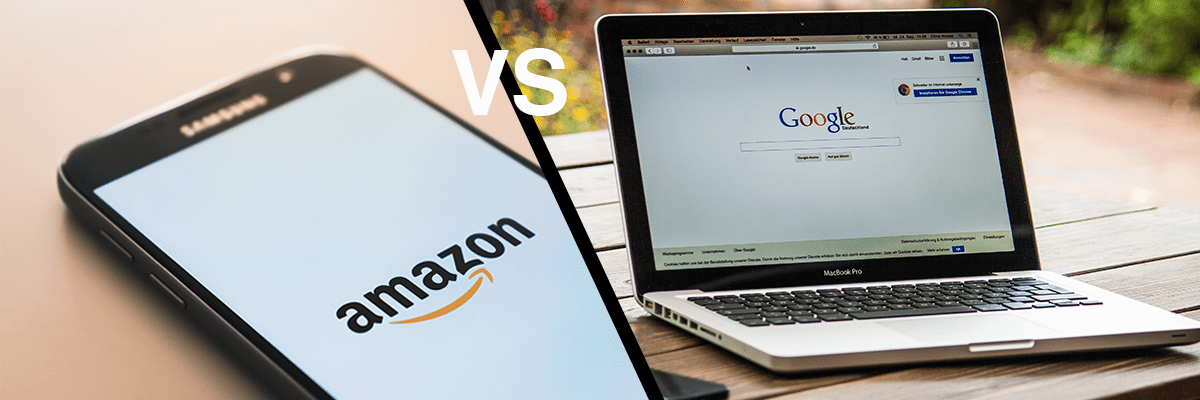One question that often arises is what the similarities and differences between the two search giants Amazon and Google are. A closer look reveals a lot of similarities, but also some significant differences.
Content
- The search field is the entry point
- Structure of the search results pages
- Google Adwords vs. Amazon Advertising
- Differences in the ranking algorithm
- Conclusion
The search field is the entry point
What both companies have in common is that for many users the search field is the entry point to the respective page or search. Google's homepage consists of almost nothing but this search field. People use it to inform themselves or search for products.
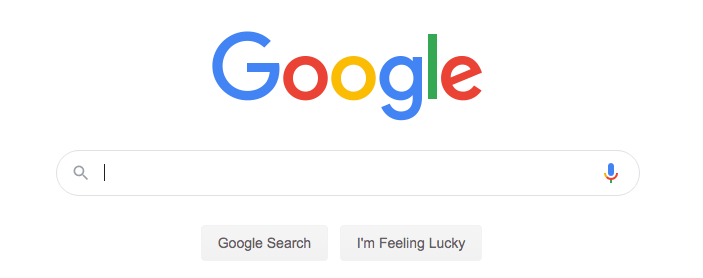
On Amazon, the search field is located at the top of the page and again, most customers use Amazon search to find a product or to obtain information.

Only a few users use the category tree or the elements of the homepage to access the Amazon product catalog.
In both cases, it can be assumed that the majority of the traffic is directed to the respective Internet pages (Google) or products (Amazon) via the search field and the search results pages.
Structure of the search results pages
Another similarity can be found when you look at the search results. In both cases you get a list of about a dozen results. On Google, these are usually displayed one below the other.
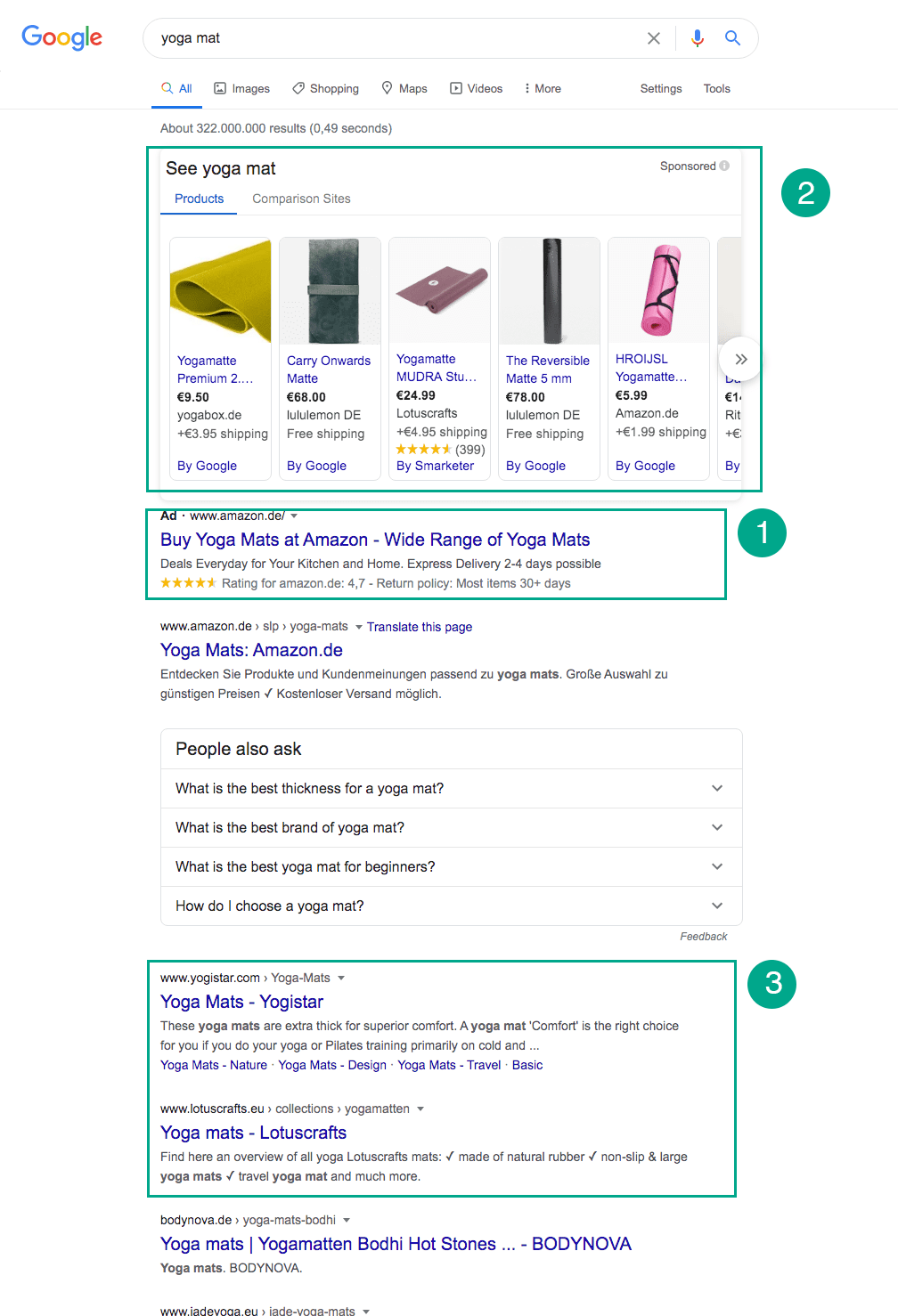
Google's search results have become more diverse over the years. Advertisements (1) have always been part of Google's business model - more on this later. But with time, new elements were added.
Here are some elements of the Google Search Results Page (SERP) at a glance:
| Designation | Description |
|---|---|
| Answer Box | Where Google tries to gather the answer straight from the search result. |
| Paragraph | Google displays excerpts from a website that contains what you are looking for. |
| List | Google extracts an enumeration from the respective website. |
| Table | Like the enumeration, except that this is a table. |
| Video | If there are matching videos, they are displayed directly in the SERPs. |
| Rich Snippets | Ads can enrich your content with "structured data" (e.g. customer reviews). These are then displayed directly in the search results. |
| Knowledge Graph | Google directly displays the essential contents, e.g. from Wikipedia. |
| Local Map Results | For searches with local reference, Google displays a map, e.g. with companies in the area. You can see an example of this in the screenshot above. |
| What others also searched for | At the end of the search result there often are similar search queries. |
| Images | If there are matching images from the image search, Google will show them here as well. |
| Site Links | For some relevant search results, Google directly displays matching subpages of the site. |
| The matching Twitter results are also displayed regularly, especially for searches with a relevance to current events. | |
| Messages | If there are matching recent messages, Google will display them directly. |
On Amazon, vertical search results continue to dominate. Sometimes, however, the results are displayed line by line in the form of tiles. This depends on the category in question.
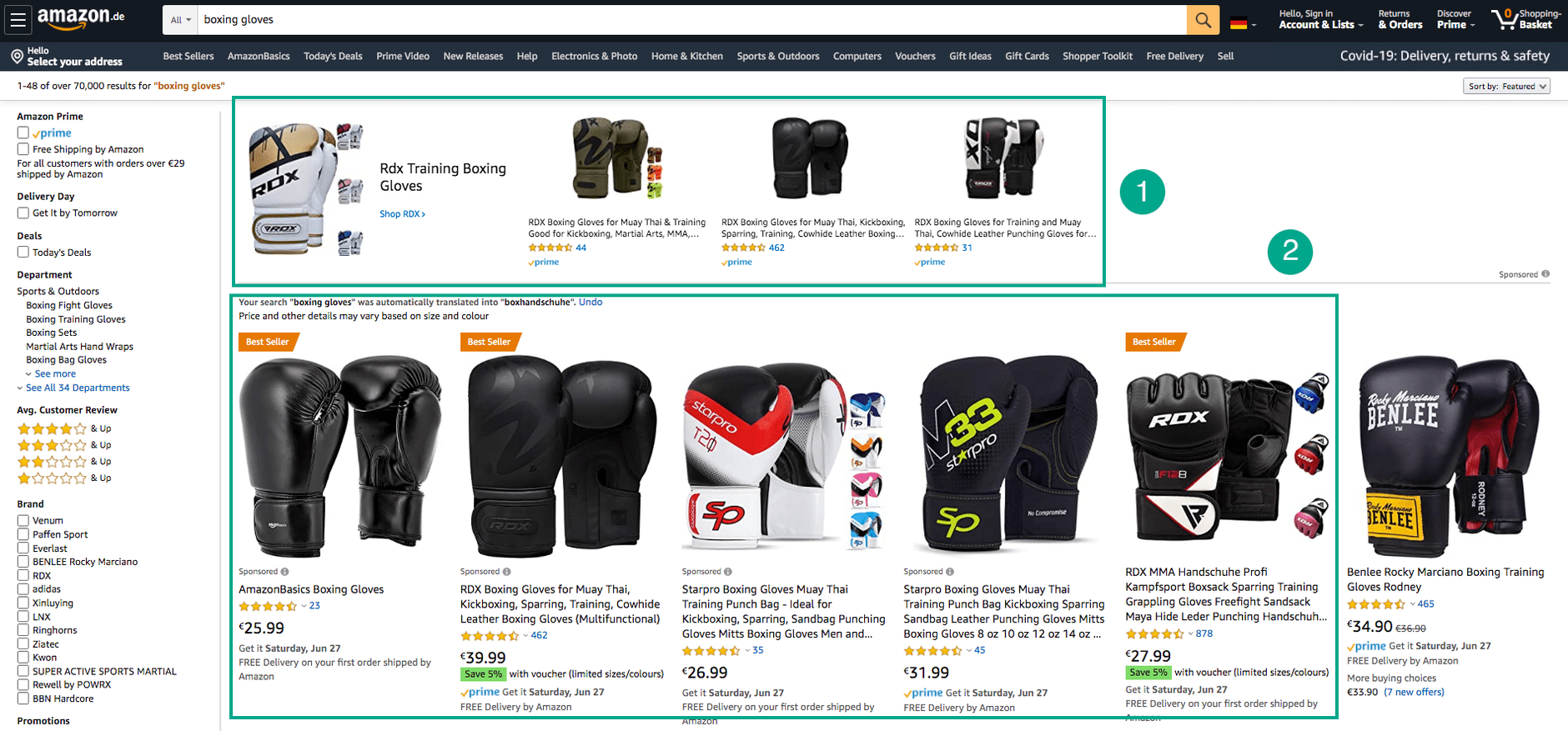
As you can see, Amazon's search results are much simpler in their structure. This is also due to the fact that Amazon almost exclusively offers product searches. Google is more diversified and has to serve a variety of search purposes.
Amazon is also dominated by ads, such as Sponsored Brands (1) or Sponsored Products (2) ads.
In both cases, the products or search results that are in the top positions are those that benefit. These receive a large part of the search traffic. Amazon directs additional attention to individual products, for example via product badges. If a product has a bestseller badge or an Amazon choice badge, this product receives far more visitors, since this represents a signal of trust for the customers.
Google Adwords vs. Amazon Advertising
As with Google, Amazon has to distinguish between organic and paid search results - both companies use the first results to auction them to paying customers. They therefore both use the auction procedure. Moreover, you can only recognize their ads if you know what to look for. Both Google and Amazon hold a lot of space for the ads. Above-the-fold usually no more organic results are shown. You have to scroll down first to see the first organic (natural) result.
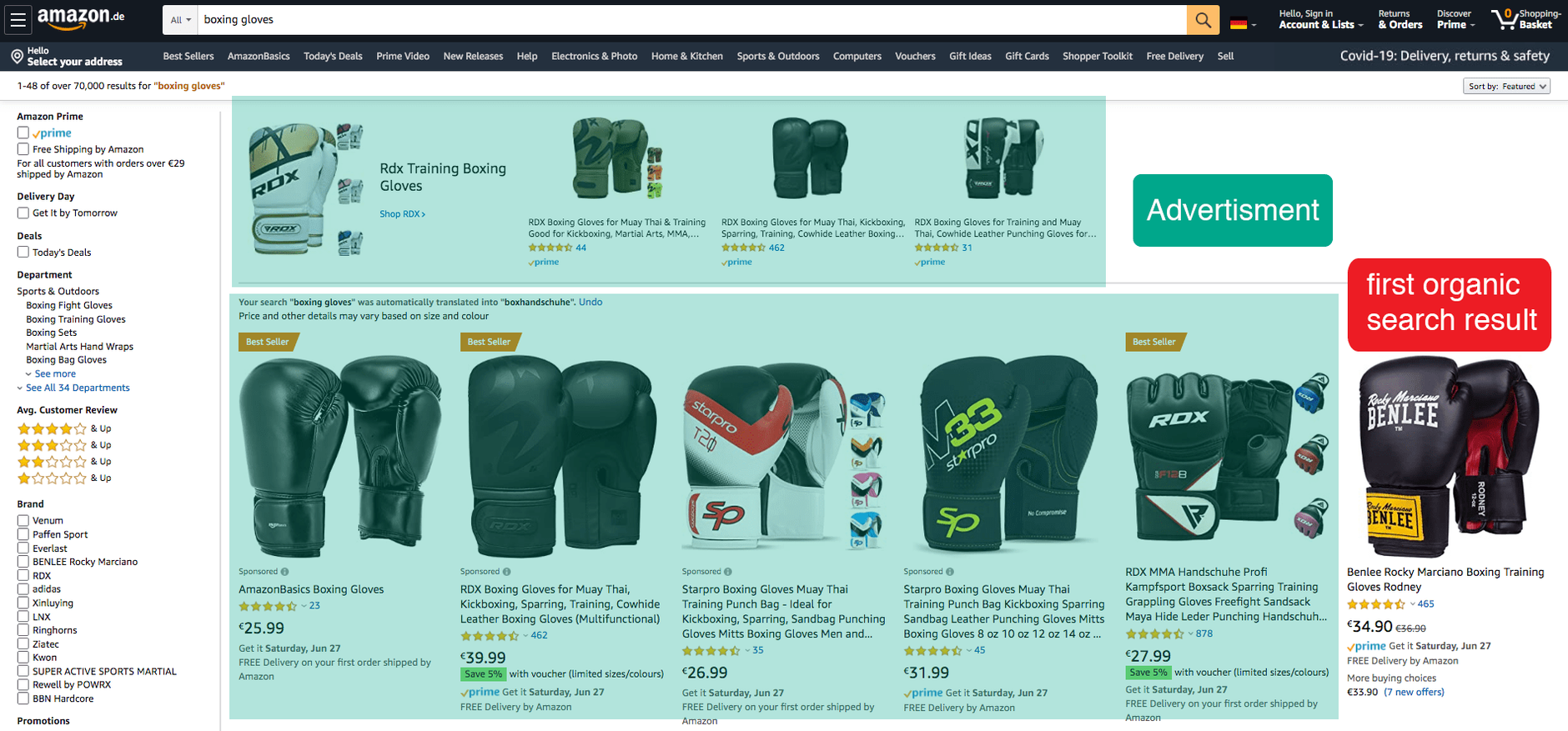
Advertising is an important source of income for both companies. However, the two giants differ in this aspect. While for Google these ads have always been the biggest source of income, Amazon is still in its infancy. Amazon still earns its money mainly through the margin on the purchase of products that Amazon sells on its behalf, or through the commission that Amazon receives when a Seller sells products on the platform. So Amazon still has a lot of catching up to do.
In terms of Targeting, Google is already much further ahead than Amazon. With Google Ads, very comprehensive targeting strategies can be pursued including retargeting. Amazon is still at the beginning of its journey but regularly adds further possibilities. With Sponsored Display Ads for example, it will be possible for the first time for all sellers to address target groups via retargeting.
Differences in the ranking algorithm
Amazon and Google also have a lot in common in terms of the ranking algorithm.
With Google, a distinction is made between so-called on-page and off-page factors, which decide on a ranking for a search phrase. The on-page factors are, for example, the occurrence of the respective search term on the page. Important elements are the page title, the headlines and of course the page text. Off-page factors such as backlinks are used by Google to evaluate the authority of a page. In simple terms, the more backlinks a page has, the better its chances of ranking higher. Google also uses so-called user signals ("social signals") to assess the quality of a page. If someone visits the page but leaves immediately, this can, for example, be interpreted as a negative signal.
This is similar to Amazon. Amazon also pays attention to whether a search term occurs, for example, in the product title or in the "hidden keywords" (also called "search terms" or "general keywords"). Furthermore user signals play an important role on Amazon too. If a product is purchased frequently, the product has a better chance of achieving better rankings.
Therefore, a major difference between the two companies is mainly due to the role of advertising. Google clearly separates its organic index from the advertising sector: You cannot improve your organic ranking with ads. It's different with Amazon: Here, ads and the resulting sales generate more sales, which is again evaluated as a user signal and thus also has an influence on the organic ranking.
Conclusion
If you take a closer look, the similarities between the two search giants are quite striking. Looking at Google shows us where Amazon could take us.
Below we compare the main aspects once again:
| Description | Amazon | |
|---|---|---|
| Essential introduction to the search | Search field homepage | Search field homepage |
| Search results page | SERPS arranged vertically with a variety of elements | Arranged vertically or horizontally with similar product information |
| Positioning advertising | Above-the-fold and below in search results | Above-the-fold and below in search results |
| Targeting Possibilities Advertising | Comprehensive | (Still) limited |
| Influence advertising on organic index | Not available | Present |
| Sorting search results | Relevance, authority, user signals (click and reader behavior) | Relevance, user signals (sales) |
